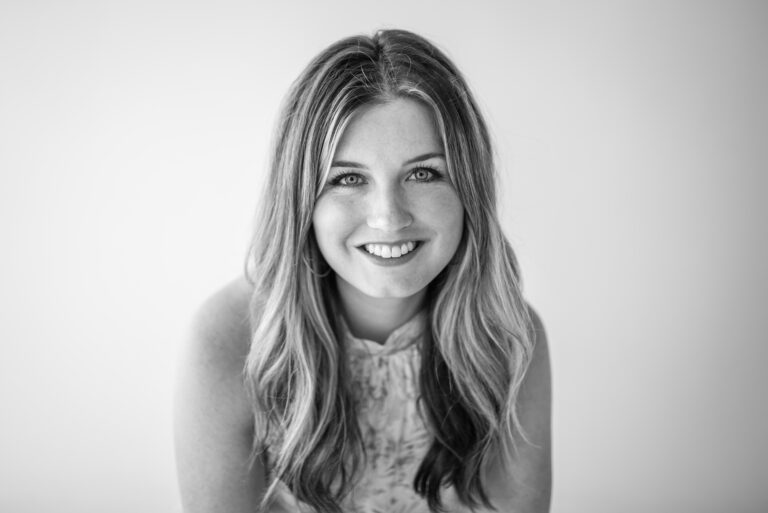In this episode, presented by 3form,ThinkLab digs into interviews Zackery Belanger, an expert in acoustic architecture and founder of Arcgeometer, to demystify how acoustics work in the built environment with an engaging discussion on how acoustics work in a space, how to measure them, and why there’s a limit to how precise we can get – as well as what’s next for the future of acoustics and the built environment.
Accredited for: IDCEC, AIA | 0.5 CEU/0.5 LU
After listening, you will be able to:
1. Point out the “blurry” aspects of acoustics, such as the human perception of sound.
2. Identify the precise tools and measurements available in acoustics.
3. Outline when to bring in an expert and how to incorporate acoustic products.
4. Evaluate how you can “design in the right direction” for the times you don’t have access to an expert.
Tune in as Belanger explains the three main parameters for measuring sound: reverberation, level, and noise reduction coefficient (NRC). But just as importantly, he stresses that designers should consider the array of tools we have available as helpful guides, keeping in mind that there is no precise target to hit for a room to be successful.
Balenger also describes how auralization simulations work and how they can help designers before a room is even complete, talking listeners through clips of three simulations. And he encourages designers with recommendations on how to navigate the gray areas of acoustics and when to do so in the process.
Quiz: Want CEU credit for listening? Click here to take the quiz, and earn your certificate of completion.
How it works:
Step 1: Listen to the episode.
Step 2: Sign in at this link to take a short, 5-question quiz.
* Scoring an 80% or above on the quiz will earn you 0.5 CEU/0.5 LU.
Step 3: Upon passing the quiz, receive your certificate of completion via email from CEU sponsor 3form.
Connect with our speakers on LinkedIn:
Cory Lesueur
Special thanks to our CEU episode sponsor, 3form, for partnering with us to provide valuable insights on compelling topics for the design industry.
The Learning Objective Episode 2: The Possibilities of Acoustics
Meredith: [00:00:00] When you think of acoustics in the built environment, you may think of something precise, like a sound rating or mathematical equation or an acoustic test report, or perhaps you think of acoustical products that help create soft, sound-absorbing services. But I bet you don’t think of the word “blurry.”
In today’s episode, we’re going to dive into the blurry, or gray area, of acoustics. Our guest is an expert in acoustic architecture who will open our minds to the possibilities of acoustics.
I’m your host, Meredith Campbell, research and content development at ThinkLab, the research division of SANDOW Design Group. And this is The Learning Objective, the first podcast where you can receive CEU credit for listening.
I’m pleased to introduce Cory Lesueur from 3form, today’s episode sponsor, to walk [00:01:00] you through the learning objectives. You’ll hear from Cory again later in the episode with instructions on how you can obtain continuing education credit through IDCEC or AIA for listening.
Cory: After listening to today’s episode, you’ll be able to:
1. Point out the “blurry” aspects of acoustics, such as human perception of sound.
2. Identify the precise tools and measurements available in acoustics.
3. Outline when to bring in an expert and how to incorporate acoustic products.
4. Evaluate how you can “design in the right direction” for the times you don’t have access to an expert.
Zackery: My name is Zackery Belanger, and I’m an expert in acoustic architecture. I have a studio in Detroit called Arcgeometer.
Meredith: Zackery’s formal education is in both physics and architecture. Often, conversations around acoustics deal with what is precise, or the measurable parts. [00:02:00] But what we don’t often consider is the lesser-known gray area of acoustics, or what Zackery describes as “blurry.” Let’s get into the tension between precision and blurriness.
Zackery: Historically, architecture was a lot less precise, I would say. And ornament was a lot more present in architecture. And so you’ll notice when you start to compare rooms with each other, the rooms that have more complicated boundaries, more complexity, more stuff — you could think of it in that way — tend to dissipate sound more quickly.
So when modern design rose up in the 20th century, our rooms got more spare. They got more minimal. We also got better at producing really flat surfaces rather than having the variations that might’ve come from hand-applied plaster. And as the ornament went away and as we got more minimal, the reverberation [00:03:00] problems rose up, and that’s really where the acoustic product industry came from. They recognize that if we want to design in a minimal way, we’re going to need highly engineered surfaces to offset the effects of the surfaces we’re using.
Meredith: Now to illustrate this simply, I want you to imagine a horizontal straight line is being drawn on a white page. The straight line represents a very simple surface, so it’s reflective. Now, imagine that line starts to get a little bit squiggly. As this line’s surface gets more complex, it becomes more diffusive.
And then imagine you’ve given the pen to a three-year-old to finish this line, and now it has become a very complex scribble. That’s an absorptive surface, and this is the difference between the flat, uncomplicated surface of today and the ornamental, complex architecture of the past, [00:04:00] thus the necessity and the rise in acoustic products.
But Zackery challenges us to remember that everything in a space is technically acoustic.
Zackery: Everything has influence on the sound of a room. If it’s a flat, reflective surface, that is acoustic. It’s just a very particular type of acoustic. And with the rise of acoustic products in the 20th century, we’ve come to call the things that are highly engineered for sound acoustic. And that’s fine, except that it tends to make us forget that everything else does also have an influence.
Meredith: And when he says everything, he even means the people that occupy the space, down to the clothes they’re wearing.
Zackery: From a design standpoint, if you’re trying to create a room that works acoustically for its function, it is better to think about the contributions of all of the surfaces and objects in the room and not limit yourself to what you [00:05:00] might buy off the shelf.
Meredith: Another area that is undoubtedly blurry: human behavior. In the world of acoustics, this is called psychoacoustics, or the study of our psychological response to sound.
Zackery: Psychoacoustics is the realm of sound that deals with human perception. And it gets into a lot of territory that is complicated, like memory.
You might have a nostalgic memory for the sound of a space. I think this is another one of those blurry areas of acoustics where we can get very precise on some things, but then there’s this aspect that determines what our experience is in a space. And that depends a lot on our individual perception of sound. It doesn’t mean it’s a perfectly accurate one. But if that space changes, you may not like the new space very much, depending on how you feel about your experience there, and someone else [00:06:00] who has those same experiences objectively might remember them differently. So, memory and our own preferences for sound really play a big role.
And even in real time, there are ways that our psychology influences the sonic experience we have in the room. The Lombard effect is probably the most well-known. And that simply means that if you’re in a social space (often a restaurant or a bar), and there are a lot of people there and they’re all talking at the same time, trying to communicate with each other, if the room does not dissipate the sound quickly enough, if it doesn’t have a low enough reverberation time, then we get the sense in that space that we’re not being heard. And we have a tendency to raise our voices, and that of course causes the space to get louder. And so we feel even less like we’re being heard and we raise our voices even louder, and it actually spirals out of control.[00:07:00]
When you design a room properly to dissipate sound quickly enough, that just doesn’t happen. It’s not that the material somehow sucks up the loudness of the room. It’s more that when the space the way it’s designed, creates a comfortable environment, we feel we’re being heard, and we all just talk more quietly. We are social beings, and we have a tendency to behave differently when we know we’re affecting the people around us. And so that awareness that someone is next door is important, and it determines how loud we might talk.
It also comes back to that idea of there being precision and blurriness, that there really is no such thing as a perfect acoustic space. There’s no such thing as a set of parameters that you can hit that will cause spaces to be unanimously regarded as successful. This has so much to do with our experience that we have to do the best that we can to hit the right area,[00:08:00] to take the precise tools that we have, but aim for a realm that is going to work for the stated function of the room, but not get too caught up in hitting particular numbers.
Meredith: We’ve talked a lot about the blurriness of acoustics. And as frustrating or maybe liberating as it can be to hear that there is no such thing as a perfect acoustical space, there are tools we can utilize to get more precise. One of these tools is called auralization, which is essentially rendering sound in a virtual space.
Zackery: It’s nice to think of auralization as being similar to visualization, except instead of it being for the eye, it’s for the ear. So in a typical auralization situation, we might model a room on a computer and run an acoustic simulation, using that model to get the acoustic fingerprint of the room. And then we can actually take audio [00:09:00] and mix it with that fingerprint so we can listen to the way the room sounds. Auralization requires information about the room, like room geometry and materials. So it’s a way of being able to hear something about a room before the room is built or at a distance.
Meredith: Next, you’re going to hear three different auralization simulations. First, you’re going to hear an empty room, and then Zackery will play a simulation of two different scenarios where acoustic materials have been applied.
Zackery: This first auralization is of a rectangular room that is made of all reflective materials. You’ll notice that the reverberation time is so long that it’s difficult to understand the speech.
This next one is what we would call a room with a solution. So we have virtually added materials to the space that were tested in [00:10:00] laboratories. We understand how they perform, and now you can hear how much clearer speech is in this space.
If you would like a reduced solution (this happens a lot in architecture), we can also of course do any quantity or combination we want. So this is an example of a room that has some materials added, but not quite as much as the solution we recommended.
Because of the equations that we have and the technologies we have, we can reach ridiculous levels of precision in our measurements and in our predictions about the way the rooms will sound. But in the real built environment, sound is a lot more blurry than that. We don’t necessarily have to hit a very precise result in order for the room to work. The tools, the precision that we have [00:11:00] are really best used as a guide, but not trusted too much.
Meredith: Now let’s get into the precision part of the conversation. What are the ratings or parameters that are important to know?
Zackery: Reverberation is probably the most important one to understand. It’s simply the way that sound lingers in a space. We can define it really mathematically, and we have. It’s technically the amount of time it takes for a sound to decay by 60 decibels, and a decibel is a measure of how loud a sound is. But I like to think about reverberation in a more general sense in that if the space that you’re designing is meant for communication (and most spaces are), then lower reverberation is better. Because the lower the reverberation, the more clear speech will be.
The second parameter is level, or how loud a sound is to us. And that’s different from [00:12:00] reverberation. Reverberation is really a room property. Level is just a measure of how loud something is. And that’s why we have two different parameters for those. Reverberation time is measured in seconds, and level is measured in decibels.
NRC is an example of a precise parameter that is very useful as long as you know its limitations. It has an unfortunate name — noise reduction coefficient — that gives us the impression that it can figure out what noise is. And noise is a very difficult thing to define precisely. It’s a little bit like defining art. The second you call something noise, you’re going to find somebody who finds it beneficial — the sound of a motorcycle, for example. A lot of people would consider that noise, but it’s actually really useful because it allows other drivers to know that the bike is there.
That’s just one example of the way that noise is elusive in its definition. But NRC is a useful parameter that is generally a zero to one range, [00:13:00] and it gives you a sense of how absorptive a surface is. So if you’re designing a room and you know you want less reverberation or more reverberation, you can use that information to figure out how much of that material you need in the space.
I should be clear that lower reverberation isn’t always better. It depends on what you’re designing for. I really try to avoid saying that any particular feature of a room or any particular sound of a room is always better than any other.
Meredith: How about codes and standards? Are there specific measurements that we should be trying to achieve in the built environment?
Zackery: There are a lot of local codes that exist to protect people against noise, and there are a number of standards, like the WELL standard, that attempt to motivate designers to create acoustic comfort in environments.
Meredith: [00:14:00] But even here, amid all of these precise measures, Zackery cautions us of some blurriness.
Zackery: It’s hard to define standards in a way that work everywhere, and sound is such a difficult and moving target that you don’t want to standardize everything too much. It may stifle innovation if you do.
Meredith: If this blurriness has you feeling a bit overwhelmed, you can always bring in an expert.
Zackery: Acoustics has a very wide range of parameters that we use to define things. Many of them are dedicated to critical spaces like recording studios and concert halls, really places for music, and those are there and available. If you’re doing that sort of project, it pays to get into those and understand those and get somebody on board who can help with those.
Or, if you just want to use some of the tools that we have to predict what the result is going to be, because [00:15:00] you’re about to make a big budget decision, that’s when you can reach out for more help.
The earlier that you get an acoustic expert involved the better, because in the same way that all materials are acoustic, really every decision that you make in the design process also has acoustic implications. We might be talking about wall thickness. We might be talking about where a corridor is placed. Circulation, the movement of people in buildings, is often a very critical component in how a building functions acoustically.
Meredith: But for those times that you don’t have access to an expert for whatever reason, Zackery has advice for what he calls “designing in the right direction,” or some general truths that you can put in your toolbox.
Zackery: I think architects who are working on 95% of the built environment may not have access to a budget to afford the expert. I think we need to [00:16:00] get better at talking to the design community in ways that are useful to them. Because the experts are here if you need us, but that doesn’t mean that what we do has to be completely mysterious. I think the idea that everything is acoustic, and that if something is more complex in its shape and its depth and its surface area, it will help dissipate sound — that’s useful information that can be used whether I’m in the room or not.
If you know that a space is going to be for communication, whether it’s a boardroom or an office or a restaurant, then adding surfaces and objects that absorb sound is going to lower that reverberation time. And it’s going to make it more conducive to that function. And something like NRC just helps you get an idea of how well each square foot of that material works so you know whether you need to add more or [00:17:00] less of it.
Meredith: Remember the line from earlier that went from straight to drawn-by-a-three-year-old squiggly? Simply adding complexity to surfaces is another way to “design in the right direction.”
Zackery: My favorite is this idea of complexity. You’ll notice spaces that have very complex boundaries have a tendency to dissipate sound. And by complex, I mean you can actually include the objects and the surfaces that you add to a room in your sense of its boundaries. So in other words, a wall of books, for example, is a good complex surface, and it has a tendency to dissipate sound. And you could take those books to a laboratory and measure them and get their NRC if you wanted, but you actually don’t need that kind of precise information in order to know that you’re designing in the right direction. If you add a wall of books to a room, that room is going to dissipate sound more quickly than if you don’t. [00:18:00] So that kind of information is really useful, I think, in the design world.
Another one that is helpful is sound transfer. We’ve been talking a lot about reverberation here — a lot of the issues that I deal with as a consultant in acoustics is from sound transfer. Sound has a tendency to go right through walls and openings and over walls and through doorways. But knowing that the more massive your wall is, and the more well sealed it is, the better it’ll stop sound is another example of a way that you can design in the right direction. And if you want to know precise parameters that predict how well we’ll perform, those also exist, but that doesn’t mean that you always have to understand that precise information in a detailed way.
You can still, for example, use sealant to seal up a gap where your wall meets your exterior window system, or you can still get full-perimeter gaskets on your door and know that these things are [00:19:00] going to help you, because you understand the basic idea that sealing up a wall system will help to stop sound.
Meredith: So let’s talk about acoustic products. What should architects and designers be thinking about as they specify these products?
Zackery: The best advice I could give is that you need to make sure that you get the right quantity in the room, and by quantity, I mean we have a term that we call a sabin, which is really a measure of absorption. And so every bit of product, every bit of material you add to a space raises the sabin count of your room. How many sabins you need depends on the room and what you’re going to use it for. But generally speaking, you’re trying to hit a target, or you’re trying to get in the rough area of a target.
I would encourage designers to be courageous about this sort of thing, because acoustics is a little more blurry than we tend to think. Because the right solution exists in a gray [00:20:00] area, it is not a very particular mark that you have to hit for most of architecture. It means that there is a lot of design possibility there. Manufacturers for the longest time designed absorptive surfaces that look a lot like painted gypsum board, because they really tried to hide it, because you usually didn’t want to see it. They’ve now started to make things that are a lot more visually impactful. And so we start with “How many sabins do you need?” And then you can go mix and match products to get the visual result you would like.
This also underscores the importance of doing it early. When you think about a room, all of its materials and all of its objects, all of its surfaces, matter to sound. That means that, in order to change the sound of the room, you’re going to have to do a significant amount to it in order to shift its behavior. So [00:21:00] integrating that in the design process early on is important if you care what the room looks like, because this stuff is pretty hard to hide. You might as well use it as one of the inputs in the design process.
Meredith: Zackery encourages designers to think about acoustic products early on in the process versus using them as a Band-Aid in the end.
Zackery: The Band-Aid approach is still done all the time, and we’re pretty good at it, but it is not as nice as the designer and the architect and the client guiding the process so that they get the look they want and the sound they want.
Meredith: Let’s talk about the impact of materials and thinking beyond just the actual material and more about the form that it might take.
Zackery: A few years ago, I started asking myself why we might call, let’s say, a flat, reflective resin panel one [00:22:00] material and a felt that’s made out of resin a different material. I think you can legitimately call those things two different materials, but if you go one step deeper and ask what substance these are made of, you end up saying resin for both of them. And I think that realization opens up a lot of possibilities, because you can then ask, “What’s the difference?” What is causing one piece of resin to be very reflective to sound — you could think of it as having a low NRC — and the other piece of resin to be very absorptive to sound? What’s causing that? What is the difference between those two? Because it’s not a material difference. It’s not a substance difference.
And where you end up is this idea of shape and complexity. If you think of a 4-foot-by-4-foot piece of flat, reflective resin, it has a square footage of 16 square feet. If you think about a 4-foot-by-4-foot square piece of felt, its actual surface area [00:23:00] is way higher than that. Because if you zoom in on all the tiny little fibers and everything, its shape is way more complicated than the other one. And I like to think about acoustics in that way. And I like to think about materials in that way. Because it isn’t just resin. You can do this with glass, you can do it with frozen water, if you want. Flat ice is very reflective to sound, and snow is very absorptive to sound. And that doesn’t mean we should be designing with ice and snow, but it does mean that these configurations, these materials, are trying to tell us something about the possibilities in our built environment.
Meredith: In order to learn what to do, it’s often helpful to look at the flip side and what not to do. Zackery shares three examples of extreme spaces. And while these sites may be fun to visit and experience, they certainly aren’t a model for how you typically like your hotel room or private office to function acoustically.
Zackery: Let’s start back with [00:24:00] that idea of modern design getting more simple and reverberation getting worse.
If you think of that in a geometric context, you can actually take the forms of modern design and make them even more simple or even less complex, with even less surface area. If you take a rectangular space and you start to imagine making it a cylindrical space, for example, or even a spherical space, those are more simple, less complex shapes. And they don’t occur very often, but we do run into them sometimes.
Maybe the most extreme one is the Mapparium at the Mary Baker Eddy Library in Boston. It’s a glass globe. I think it’s about 30 feet in diameter, and you can walk into it and walk out onto a bridge and listen to it. And it’s probably the most extreme acoustic space I’ve ever encountered because its shape is so simple. It’s a sphere. It doesn’t dissipate sound really at all. Any sounds you make in the center of it will come back at you many times [00:25:00] louder, and it doesn’t like to dissipate sound.
Another one is the Tank in Rangely, Colorado, which is an old water tank that was not able to be filled with water because it would have been too heavy for the ground surface below it. And it’s been turned into a center for the sonic arts where people seek out this extreme sound because of the effects that it has. And again, this one is more simple than a rectangular room might be. It’s more of a cylinder.
And then a third one is right here in Detroit where I’m based. It’s the atrium at the Charles H. Wright Museum of African American History. And there are of course a lot of important reasons to visit that building, but the first thing you will encounter when you enter it is this sonic wonder of the glass dome at the top of the atrium [00:26:00] and the cylindrical stone that surrounds it, which amplifies any sound that is made inside of it.
Meredith: We asked Zackery what the future of acoustics and the built environment looks like. It boils down to two things: intuition in the design process and responsive acoustics.
Zackery: I think the core potential for this field, for acoustics, is centered on the idea that it could be a lot more intuitively used in the design process. What I mean by that is we understand the way that the shape of our spaces influences the sound inside, and we also understand that all of the objects we add and the surfaces we add are an integral part of that shape. And if we understand that material is really just telling us what shapes are possible, then everything opens up. There’s so [00:27:00] much possibility there.
And so I see a future where architects and designers are exploring the sound of rooms based on the decisions they are making that are all about form, which of course integrates with the visual and with a lot of functional aspects. If you’re going to design a chair, you’re of course going to think about how it functions as a chair. You’re going to think about how it looks, and you’re also going to think about what effect, however small it may be, that has on the space as a whole. And I think that also, when we look at shape and material in this way, there are possibilities for gradient acoustic surfaces. There are possibilities for surfaces that change their form in a more reactive sense that would therefore change the sound of the room.
The potential for responsive acoustic systems really just is based on what [00:28:00] geometries and shapes are exposed to the inside of the room, but it also invites this question of “What are you aiming for?” So, many rooms don’t need that sort of thing. They are for one purpose — communication — and you can design them in a static way that fits your budget, and you don’t need to worry about anything fancy or automated or anything reactive.
But if we think about maybe the more critical spaces, like concert halls, where a variety of different functions is going to be a part of what they do, then there’s more potential for this. There’s more potential for, let’s say, a room to adjust its shape and therefore its sound when it’s more full of people or less full of people, or when it’s in a rehearsal mode versus a mode for performance. But it all comes from this idea that oftentimes you have a wide range of things you want to do in a room, but you can design to the one that is the most stringent [00:29:00] acoustically and the others come along with it. So that is, in many ways, the best way to design. Even if you could get excited about something like reactive acoustics, it’s completely unnecessary in a lot of situations.
We can also take cues from different worlds and uses of architecture where there is more of a need for variability, such as the recording industry, for example. Recording studios need to be as flexible as possible. Sometimes you want it to be a very dead room, meaning a very low reverberation. Sometimes you want a very live room, or you might even want a particular reflection structure. The recording industry has been doing a lot of these things for a long time, at least in a more manual way. It’s not that hard to build a system that allows you to, say, expose a diffuser or expose an absorber or expose a reflector, depending on the shape that you want. The thing that could come, if we understand how all of these are related, [00:30:00] is a system that changes itself based on feedback from the room. That’s where the reactive part would come in.
Meredith: Here’s Cory to close out the episode and share instructions on how to obtain continuing education credit through IDCEC or AIA for listening.
Cory: Three key points from the episode that stood out to me:
First, while there are precise measurements and parameters in acoustics that are helpful guides, there is a wide gray area that also must be considered.
Second, the concept of “designing in the right direction” helps designers navigate the gray areas of acoustics. A few examples Zackery suggested were: adding complexity to surfaces, addressing sound transfer between spaces, and getting the quantity right for acoustic products.
Third, consider acoustic products and engaging experts early in the design process. That way it’s not just a Band-Aid applied at the end of the project.
[Insert [00:31:00] tie-in to 3form brand/initiative, etc here. 30 seconds to 1 minute (max) works best for audience engagement. 120 words = 1 minute][HN1]
To obtain credit for listening, simply visit the show notes of this episode, and click the link to take a short quiz. That’s it!
Meredith: Thanks for listening and learning with us in this episode of The Learning Objective. If you enjoyed what you heard, please rate, write a review, and of course follow our show so you never miss an episode.
[HN1]QUERY: Insert missing text, or delete this internal note?











